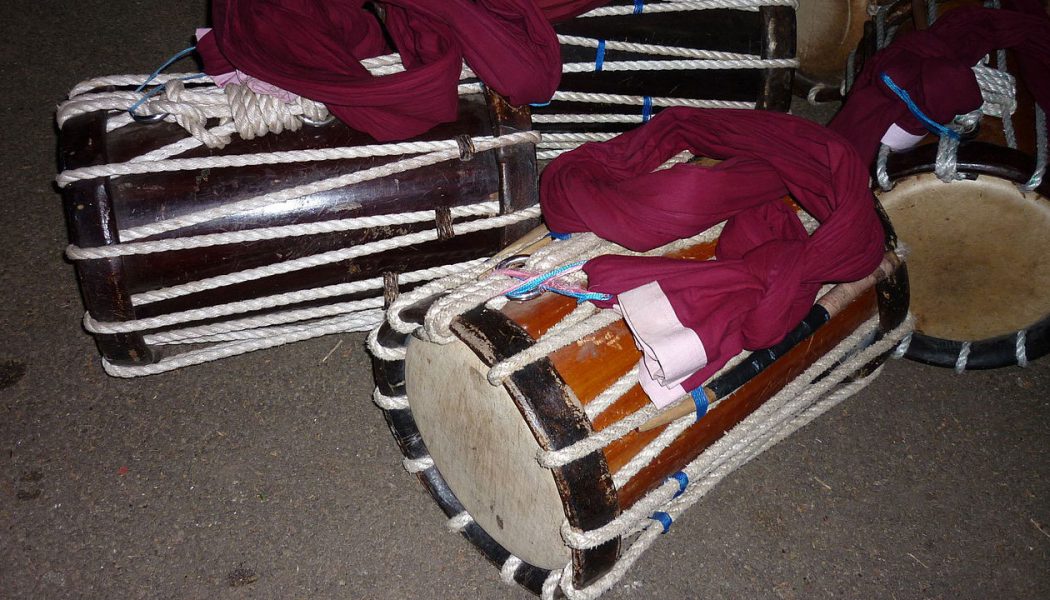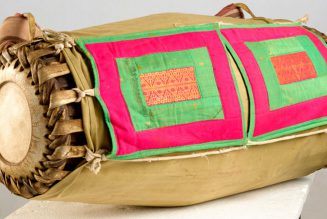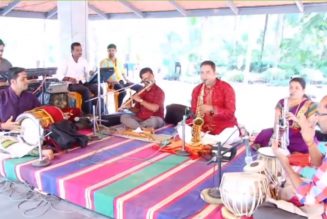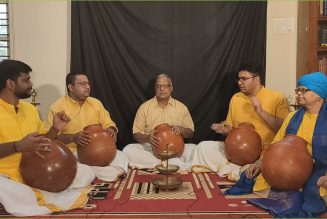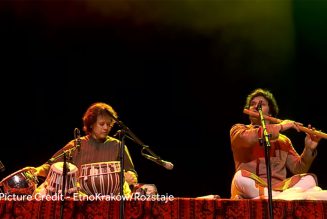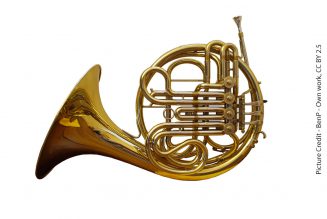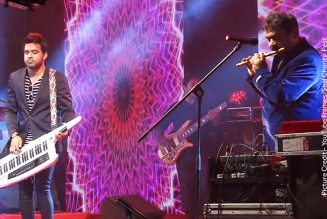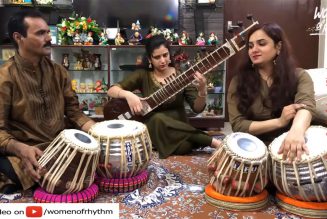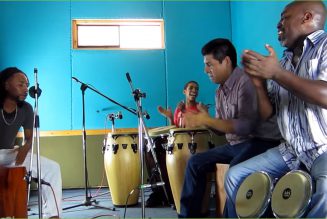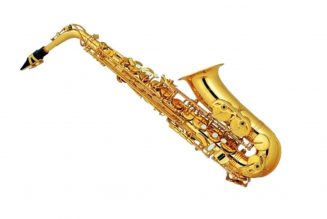Chenda, basically a drum, is a double headed cylindrical percussion and temple instrument which has its origin from the state of Kerala. It produces a loud and rigid sound and used in temples and other cultural festivals. It is also popular in Tamil Nadu and Coastal Karnataka. Chenda is an essential accompaniment and an Anavadha Vadya or Percussion Instrument. Its Sanskrit name is Dindimam.
Construction
A Chenda has two sides on which a leather membrane is stretched over a hollow cylindrical body. The two sides are known as “Valam Thala” – Right head and “Edam Thala” – Left head. Usually one or two layers of Cow’s Skin is used on the left head. The right head will have five or seven layers of skin and produces the “Bass” sound.
The skins of the Chenda are fastened on wooden rings, called “Chenda Vattam”, which is made of the trunk of local Palm Tree (Eerappana) or Bamboo. Hollow body of the Chenda is made of soft wood like of Jack Fruit Tree. It has a thickness of 1.5 inches and 1 feet in diameter. Ropes are used to fasten the wooden rings with the skins on to two sides. The ropes are also used to adjust the tension of the skin.
Depending upon the diameter of the Chenda Vattam, Chendas are classified into different types. They are like Ettara (8.5) Veechan Chenda, Ompathu (9) Veechan Chenda, Ompathekal (9 1/4) Veechan Chenda, Ompathara (9 1/2) Veechan Chenda etc.
Playing a Chenda
Chenda is usually played hanging the instrument using a cloth strap, from the players neck. One or two curved wooden sticks are used to play the Chenda. There are two functional categories of Chenda – Uruttu Chenda and Veekkau Chenda.
The Chenda Sticks are made of Tamarind Tree. The stick could be about 29cms in length and 3 to 2.5cms (tapered) in diameter. Valam Thala is played using a long and thin stick. When two sticks are used to play the Edam Thala, the stick in the right hand is hit on the ipper part of the Chenda Vattam. The stick in the left hand is hit on the lower part of the Chenda Vattam.
Veekku Chenda (Valam Thala) produces the Bass effect and is used to keep the thalam or basic rhythm. It is normally played by one stick. The Uruttu Chenda (Edam Thala) is played by one or two sticks and by rolling the players right hand wrist. While playing the Veekku Chenda, the player hits directly without rolling his wrist.
Chenda is played in “Kaalam” which is basically a degree of geometric speed. It starts with “Onnam Kaalam” (first degree), followed by two, three four and up to 10 Kaalams. The time to complete one Kaalam is called the Thaalavattam.
Chenda art forms
The various percussion art forms of Kerala where Chenda is used as the main instrument are as follows.
- Paandi – Paandi Melam
- Panchaari – Panchaari Melam
- Singaari – Singaari Melam
- Dhruvam
- Adantha
- Anjadantha
- Chemba
- Chembada
- Triputa
Paandi Melam and Panchaari Melam are most popular forms while Panchaari Melam is played inside the temples during festivals. Paandi Melam is not generally played inside the temple – exception is the “Elanji Thara Melam” during the famous “Thrissur Pooram”. Thayambaka is another interesting performance using single and double Chenda(s).
Let us now watch a basic Chenda Lesson. Sorry… I could get only a Video in Malayalam Language for the moment. I shall try to find one which explains in English.
